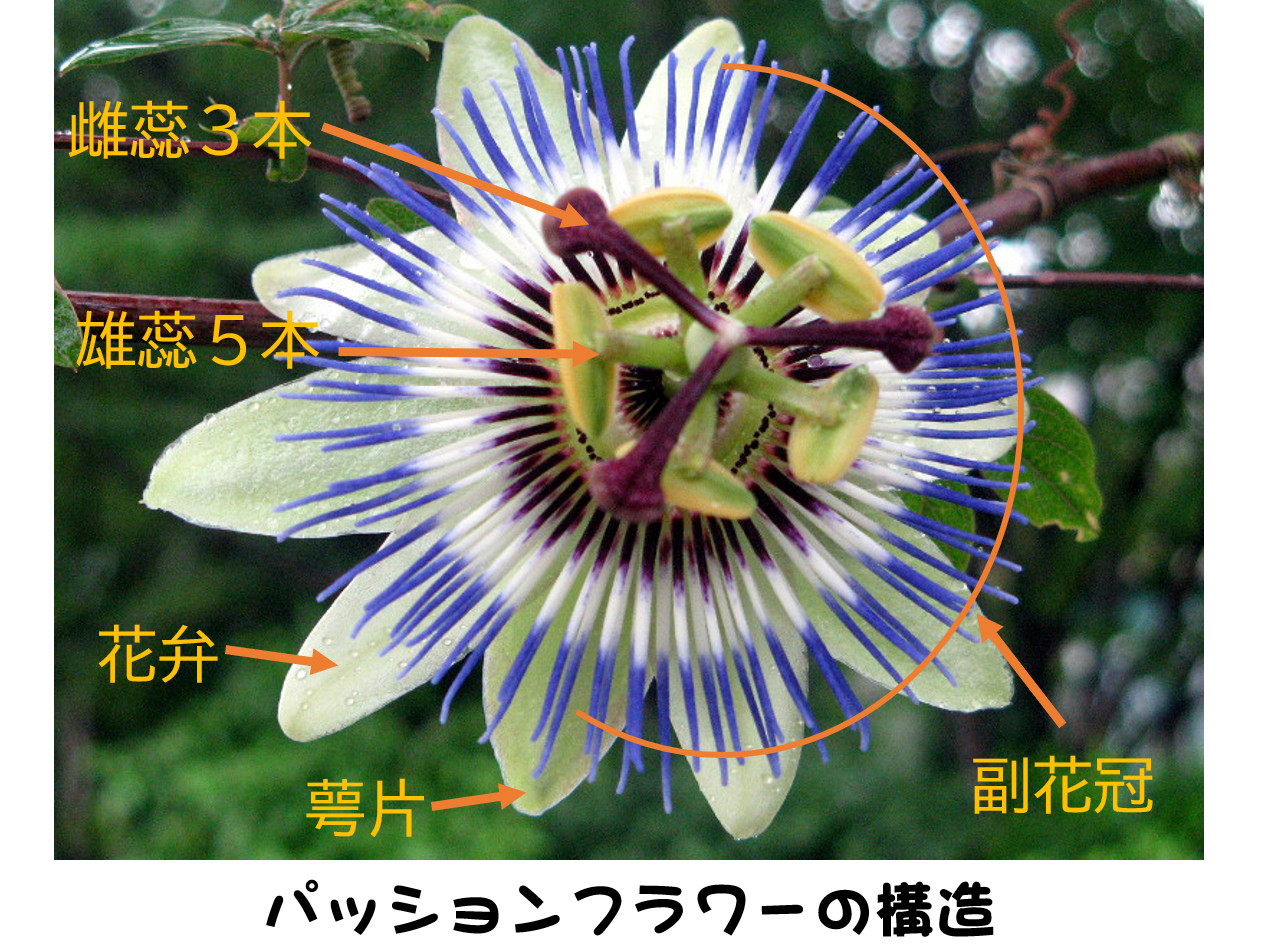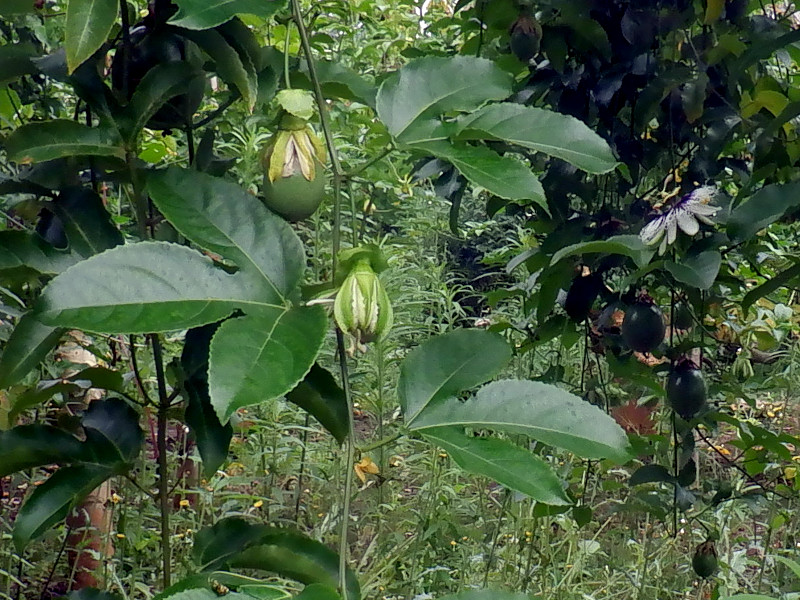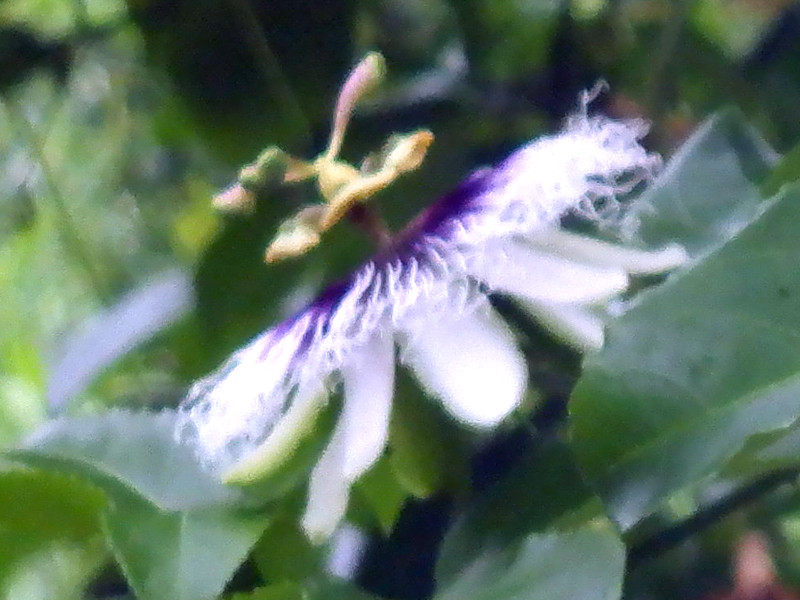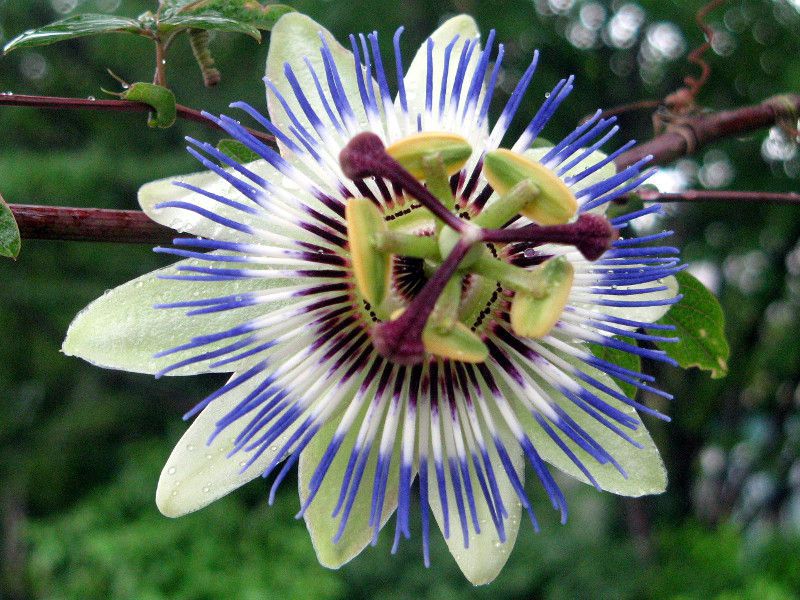Passionflower
- Flower namePassionflower
- Scientific namePassiflora caerulea
- AliasPassiflora, パッシフローラ・カエルレア, Passiflora caerulea, パッシフローラ・セルレア, パッシフローラ, Passion flower, Common passionflower, Blue passionflower, トケイソウ, 時計草, カエルレア
- Place of originBrazil, Peru and tropical America.
- Place of floweringGarden, Botanical Gardens, Park
- Flowering seasonMay, June, July, August, September
- Language of flowers「holy love」「faith」「religious fervour」
What is Passionflower
The Birth Flower of June 13: Passion Flower (Passion flower, Tokeisō)
The passion flower (Tokeisō, Passion flower, scientific name: Passiflora caerulea) is a semi-hardy evergreen climbing shrub of the genus Passiflora in the family Passifloraceae, native to tropical America such as Brazil and Peru. It is the national flower of Paraguay.

Structure of the Passion Flower
It is also known by other names such as tokeiso, Passiflora caerulea (scientific name), blue passion flower, passion flower (flower of the Passion), Passiflora, common passion flower, blue passion flower, caerulea, and janomesō (“snake’s-eye flower”).
In Japan, it is called "Tokeisō" (clock plant), mainly referring to Passiflora caerulea, although the term may also refer to the entire genus Passiflora.
The vine can grow 3–6 meters long (up to 25 meters at maximum).
It blooms from May to September, producing cymose inflorescences and one-day flowers with a diameter of 7–10 cm.
The flower appears to have 10 petals, which are actually 5 white petals and 5 similarly colored sepals. The flower also consists of 3 stigmas, 5 stamens, and a corona (secondary crown).
At the top of the flower, there are three dark-purple (trifid) stigmas protruding, beneath which are five yellow-green stamens, and further below is a corona formed by fine radial filaments that resemble a clock dial. These filaments are blue at the tip, white in the middle, and dark purple at the base.
Pollinators include bumblebees, carpenter bees, hornets, bats, and hummingbirds.
The resulting fruit is a yellow oval berry, containing many large seeds, and is not palatable, unlike the edible passion fruit (Passiflora edulis).
It is often grown for ornamental purposes, such as green curtains. The leaves serve as food for butterfly larvae.
Differences Between Passion Flower and Passion Fruit
The passion flower (Passiflora caerulea) is cultivated for ornamental flowers, whereas the passion fruit (P. edulis) is grown for its edible fruit. Both belong to the Passiflora genus and bear flowers with a corona resembling a clock face. Differences include:
■ Leaves


Left: Passion fruit (P. edulis) has trifid (3-lobed) leaves.
Right: Passion flower (P. caerulea) has palmate leaves with five lobes.
■ Flowers


Left: Passion fruit flowers (P. edulis) are smaller (5–7 cm) and have drooping, twisted corona filaments.
Right: Passion flower (P. caerulea) has larger (8–10 cm) flowers with straight corona filaments.
● Characteristics of Passion Flower (P. caerulea)
Leaves are palmately 5-lobed with smooth edges.
Corona filaments are shorter than the perianth and stand straight.
Fruit is yellow-orange, egg-shaped, and tasteless.
● Characteristics of Passion Fruit (P. edulis)
Leaves are deeply 3-lobed with toothed margins.
Corona filaments are longer than the perianth, twisted, and drooping.
Fruit is purple or yellow, oval-shaped, and edible.
■ Summary of Differences
The fruit of the passion flower is not the same as passion fruit; they are different species.
Leaves differ: 3-lobed (P. edulis) vs. 5-lobed (P. caerulea).
Corona filaments: twisted and drooping (edulis) vs. straight (caerulea).
Origin of the Flower Name
The genus name Passiflora comes from the Latin “flor della passione” (flower of the Passion).
The species name caerulea derives from the Greek word for “blue,” referring to the blue corona filaments.
The English name “Passion flower” originates from the Latin “flos passionis.” In Catholicism, it symbolizes the Passion of Christ.
Saint Francis of Assisi is said to have dreamed of this flower, and its structure evokes the crucifixion of Christ.
In Japan, the name “Tokeisō” (clock flower) comes from the resemblance of the flower to a clock face, with its three stigmas likened to hour, minute, and second hands.
Deeper Meaning of the Flower Structure
5 sepals + 5 petals = 10 petals → represent the “10 faithful apostles” (excluding Peter and Judas)
Corona filaments → “crown of thorns”
3 stigmas → “three nails”
5 anthers → “five wounds” (four nail wounds and one from the spear)
Blue and white → “heaven and purity”
Ovary column → “cross”
Leaf tips → “spear”
Tendrils → “whip”
Ovary and receptacle → “Holy Grail”
Relatives of the Passion Flower
There are about 550 species in the Passiflora genus. Major examples include:
Passiflora caerulea: beautiful blue and white contrast flowers
Passiflora coccinea: bright red flowers
Passiflora edulis: edible fruit used fresh, in juice, or jams
Passiflora 'Panda': cultivated variety developed in Germany
Caerulea is for ornamental use
Named after the clock face (petals) and the hour/minute hands (stamens/stigmas).
In the West, it's associated with Christ's crucifixion and called "Passion flower."
This species is the representative ornamental Passiflora with striking blue and white flowers.
General name: Tokeisō (clock plant)
Scientific name: Passiflora caerulea
Other names: Passion flower, common passionflower, blue passionflower, Passiflora, caerulea, janomesō
Classification: Plantae, Angiosperms, Eudicots, Malpighiales, Passifloraceae, Passiflora genus
Origin: Tropical America (Brazil, Peru)
Life form: Climbing shrub
Vine length: 3–6 m (max 25 m)
Leaf type: Palmately 5-lobed, entire margin, alternate
Flower symmetry: Radial
Sexuality: Hermaphrodite
Flowering season: May–September
Flower diameter: 7–10 cm
Color: White and bluish-purple
Bloom type: One-day flower
Fruit: Berry, oval, 4–6 cm long, green to yellow, tasteless (not edible like passion fruit)
Uses: Ground cover, ornamental
■ Related Pages
Passion Flower (Passiflora caerulea)
Passion Fruit (Passiflora edulis)
one-day-flower









